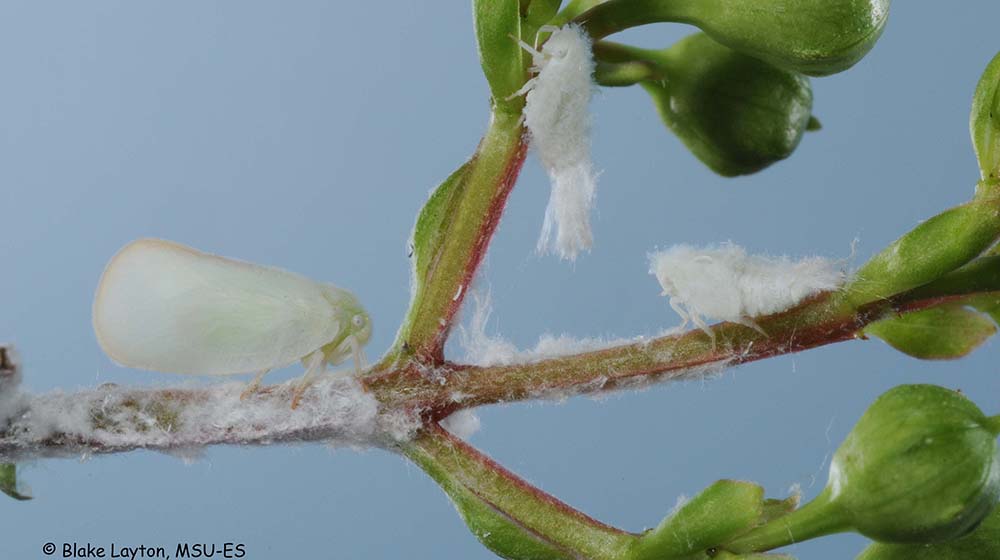Flatid Planthoppers, No 11

Flatid Planthoppers
Order: Hemiptera
Family: Flatidae
In late spring, gardeners often notice accumulations of fuzzy white material along the tender twigs of woody, ornamental plants. Closer examination often reveals the immature insects that produce this cottony wax, and some adults may also be present (the adult in the photo is about ¼ inch long). This waxy material is water repellent and it also helps protect the nymphs from predators. Insect predators and spiders just don’t like to walk through the stuff and get it on them. Planthoppers comprise a large, diverse group of insects, and there are many different families within this group; hence the need to specify that these are Flatid planthoppers. Planthopper nymphs also produce honeydew, and heavy infestations can result in localized accumulations of honeydew and sooty mold. Sometimes a “colony” of planthoppers may contain nymphs and/or adults of two or more species.
Control: Planthopper infestations are rarely heavy enough to require control. In cases where nymph populations become heavy enough to cause mild concern, simply waiting a couple of weeks may resolve the problem. Once the nymphs mature, they will stop producing that fuzzy material that is so noticeable, and there is usually only one generation per year. If control is deemed necessary to control unusually heavy infestations on small or high value plants, foliar sprays with appropriately labeled pyrethroid insecticides, such as bifenthrin, cyfluthrin, or permethrin, should work.
Blake Layton, Extension Entomology Specialist, Mississippi State University Extension Service.
The information given here is for educational purposes only. Always read and follow current label directions. Specific commercial products are mentioned as examples only and reference to specific products or trade names is made with the understanding that no discrimination is intended to other products that may also be suitable and appropriately labeled.

